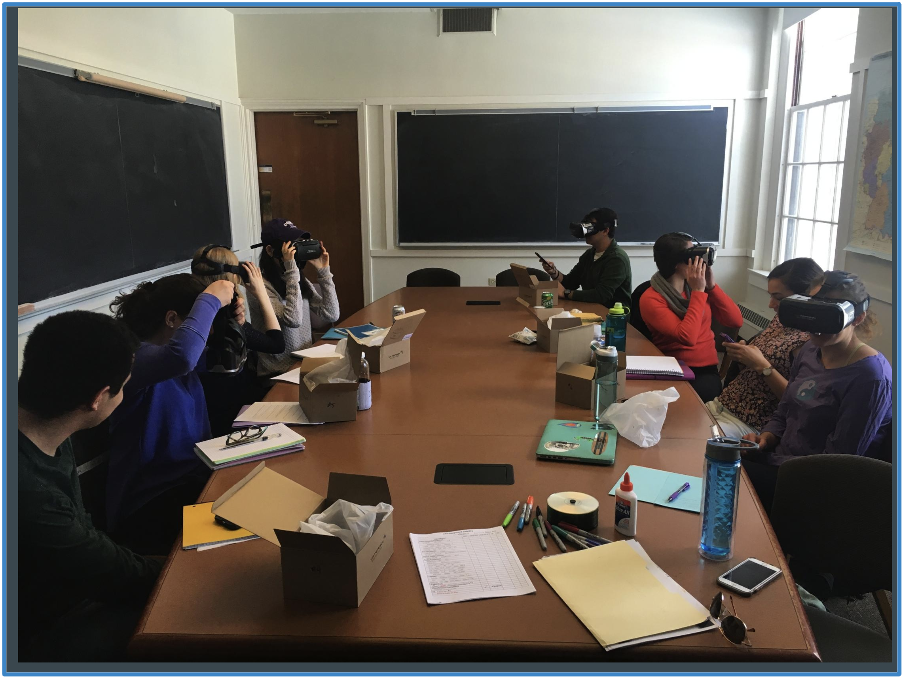
Teaching Objective: Introduce students to Spanish history, literature, and culture, and learn about the annual pilgrimage to the Cathedral of Santiago de Compostela along the Camino de Santiago in northern Spain through the use of virtual reality.
Project Description: In Professor Granda’s spring 2017 course Camino de Santiago, students used the Camino de Santiago 360° app, with iPhone or Android inserted into Google Cardboard virtual reality “goggles”. This equipment allowed them to virtually walk the Camino and experience it in the shoes of a pilgrim. While the virtual experience is not equivalent to a study abroad experience, Professor Granda hoped that this would motivate and prepare students for future real life discoveries. Students reported that the immersive experience of entering buildings and walking down crowded streets made them feel “like [they were] there”, gave them a better “sense of the terrain” and allowed them to “imagine and picture the Camino better than ... just googling images.”
For one of the assignments in the course, students developed their own Camino Diaries. By combining several Google tools such as Maps and Tour Builder, students designed their own interactive tour of the pilgrimage, choosing their point of views along the walk, locating them in Google Maps and providing a textual narrative along with photos and videos from other sources.
Academic Technology Tools: Google Cardboard, Camino de Santiago 360 degree app built in Layar, Google Maps, Google Tour Builder (now part of Google Earth).

Students trying out the VR headset in the Amherst Spanish classroom.
Reference: Granda, C. (2019). The Camino Diaries: Bookmapped Storytelling in the Spanish Classroom. Hispania, 102(4), 529–546. https://www.jstor.org/stable/26867200.







